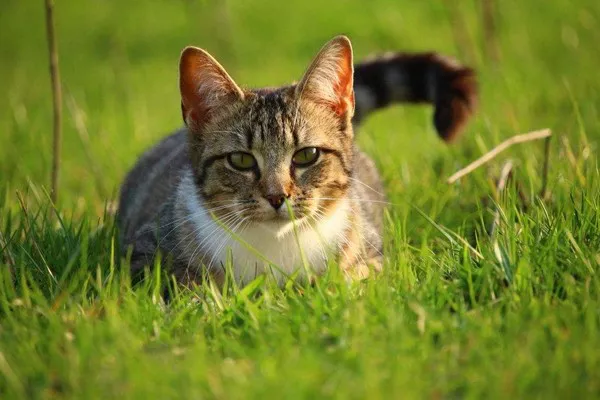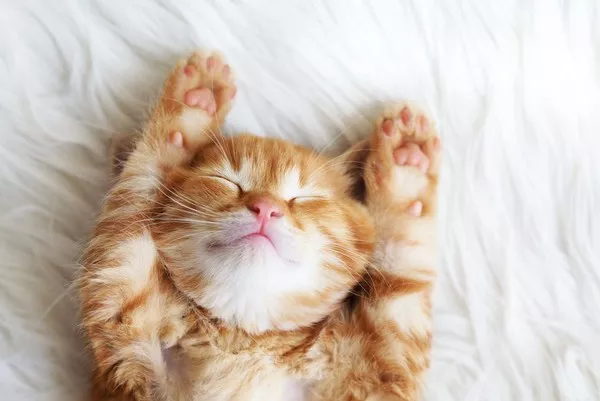Introduction to Calico Cats
Calico cats are renowned for their striking and distinctive fur patterns, characterized by patches of three colors – white, black, and orange or ginger. These beautiful felines are not a specific breed but rather a color pattern that can occur in various breeds, including the American Shorthair, Persian, and Maine Coon. What makes Calico cats unique is their genetic makeup, particularly their sex chromosome composition.
Typically, Calico cats are females, although rare instances of male Calicos do exist, usually due to genetic anomalies like XXY chromosomes. The distinctive tri-color coat results from the interaction of genes located on the X chromosomes, with one carrying the black fur gene and the other carrying the orange fur gene. The random inactivation of one X chromosome in each cell during early development creates the mosaic of colors characteristic of Calico cats.
Understanding Cat Pregnancy
Before delving into the specifics of Calico cat pregnancies, it’s crucial to understand the general aspects of feline pregnancy. Like other mammals, cats undergo a period of gestation after successful mating. The duration of feline pregnancy can vary depending on factors such as breed, age, health, and environmental conditions.
Gestation Period
On average, the gestation period for cats ranges from 63 to 65 days. However, this timeframe can fluctuate slightly, with some pregnancies lasting as short as 61 days or as long as 69 days. Calico cats follow this general gestation period, meaning their pregnancies typically last around 63 to 65 days from conception to delivery.
Stages of Pregnancy
A cat‘s pregnancy progresses through several distinct stages:
Early Stage: During the first few weeks, physical changes may not be obvious, but behavioral changes may occur. The fertilized eggs travel to the uterus for implantation.
Mid-stage: Around three to four weeks into the pregnancy, the cat’s abdomen may start to swell, and her nipples may become more prominent. An experienced veterinarian can confirm the pregnancy through palpation or ultrasound.
Late Stage: In the final weeks, the cat’s abdomen becomes noticeably enlarged as the kittens continue to develop. The mother may become more restless and seek out a suitable nesting area for birthing.
Signs of Pregnancy
Identifying pregnancy in a Calico cat involves observing both physical and behavioral changes. Common signs include:
Enlarged abdomen: As the pregnancy progresses, the cat’s belly will visibly swell.
Nipple changes: The nipples may become larger and pinker.
Behavioral changes: The cat may exhibit nesting behavior, become more affectionate, or experience mood swings.
Veterinary Care
Regular veterinary check-ups are crucial throughout the pregnancy to monitor the mother’s health and the development of the kittens. A veterinarian can provide guidance on nutrition, detect any potential complications early, and offer advice on preparing for birth.
Nutrition and Care
Proper nutrition is vital for the health of both the mother and her kittens. During pregnancy, Calico cats require a balanced diet rich in essential nutrients such as protein, calcium, and vitamins. It’s advisable to transition the mother to a high-quality cat food formulated for pregnant or nursing cats to meet their increased nutritional needs. Fresh water should be readily available at all times.
In addition to diet, providing a comfortable and stress-free environment is essential for the well-being of the pregnant cat. A quiet, secluded area where she can rest undisturbed is ideal for nesting and giving birth.
Preparing for Birth
As the due date approaches, it’s essential to prepare a birthing area or “kitten box” where the mother can safely deliver and care for her offspring. The box should be lined with clean towels or blankets and placed in a warm, draft-free location away from noise and distractions. Keep essential supplies such as clean towels, scissors, and a heating pad nearby in case of emergencies.
Post-Birth Care
After the kittens are born, the mother will instinctively care for them, nursing and grooming them regularly. However, it’s essential to monitor both the mother and kittens closely for any signs of distress or complications. Common post-birth issues include difficulty nursing, maternal neglect, or health problems in the kittens. If any concerns arise, seek immediate veterinary assistance.
FAQs
Can male Calico cats reproduce?
While extremely rare, male Calico cats can theoretically reproduce. However, they are usually sterile due to their abnormal sex chromosome makeup.
How many kittens can a Calico cat have?
The litter size can vary, but Calico cats typically give birth to an average of three to five kittens per litter.
When should I start preparing for the birth?
It’s best to start preparing for the birth several weeks before the expected due date to ensure you have everything ready, including the birthing area and necessary supplies.
In conclusion, understanding the unique aspects of Calico cat pregnancies and providing proper care throughout the gestation period and beyond is essential for ensuring the health and well-being of both the mother and her kittens. By being attentive to signs of pregnancy, seeking veterinary care, and providing a nurturing environment, cat owners can help facilitate a safe and successful birth experience for their beloved Calico cats.
Related Topics:























